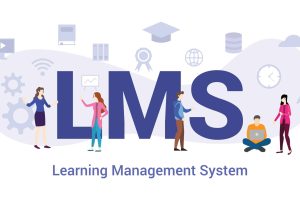The conventional teaching approach has lasted for centuries, with the educator being the main dispenser of knowledge, while the pupils are supposed to soak up and recall the content provided. However, the emergence of technology has paved the way for ground-breaking and creative teaching techniques aimed at enhancing the learning process. Among the many techniques, the flipped classroom approach is becoming increasingly popular, particularly with the incorporation of online learning management systems, resulting in a more interactive and productive experience.
What is The Flipped Classroom Model?
The roles of the teacher and the student are made completely different in the flipped classroom model, an approach to learning. A flipped classroom means students are provided with learning materials before the actual class, through video lectures or online resources, for example, and are then expected to learn the material on their own. When they come to class, they are expected to engage with and participate in discussions and activities that strengthen their knowledge on the topic.
Pacing oneself and gaining better retention and understanding of the material are just a couple of the many benefits of the flipped classroom model compared to the traditional model. By putting students in charge, they are able to take control of their learning, vastly improving retention and understanding. Additionally, this format encourages active learning, in turn boosting critical thinking, problem-solving skills, and collaboration.
The Flipped Classroom Model and the Standard Classroom Model are comparable in some aspects but diverge in a few key ways. What are those discrepancies, you might ask? Essentially, the Flipped Classroom Model calls for students to view educational content prior to class meetings, while the Standard Classroom Model typically presents the educational material during in-person class meetings. Though the timing differs, both classroom models nonetheless aim to equip students with the necessary knowledge and skills to succeed academically.
Is conventional learning dead?
The conventional method for teaching places the teacher at the helm, with the student being responsible for soaking up and preserving any information provided. In contrast, the flipped classroom enables students to take charge of their education and actively engage themselves in the learning process. As a result, students receive customized instruction, as the teacher can cater to their individual needs.
Incorporating the flipped classroom model with Online LMS system and video conferencing system provides an excellent opportunity for teachers to elevate their students’ learning experience. Making use of LMS allows for the easy transfer and sharing of educational resources, like videos and online materials, before the actual class. Collaborating and communicating with students is straightforward, thanks to learning management system. This elevated interaction results in more advantageous and engaging classroom discussions and activities.
Summary
The combination of web-based learning platform and the flipped classroom approach has numerous advantages over conventional classroom teaching. This innovative teaching method encourages students to take charge of their education, fostering greater student engagement for a deeper understanding of course material. This personalized approach to teaching with Online LMS also fosters collaboration between pupils and teachers, enabling dynamic teaching that caters to individual needs. To sum it up, the flipped classroom model, enriched by the use of , is a fruitful approach to improving education.






